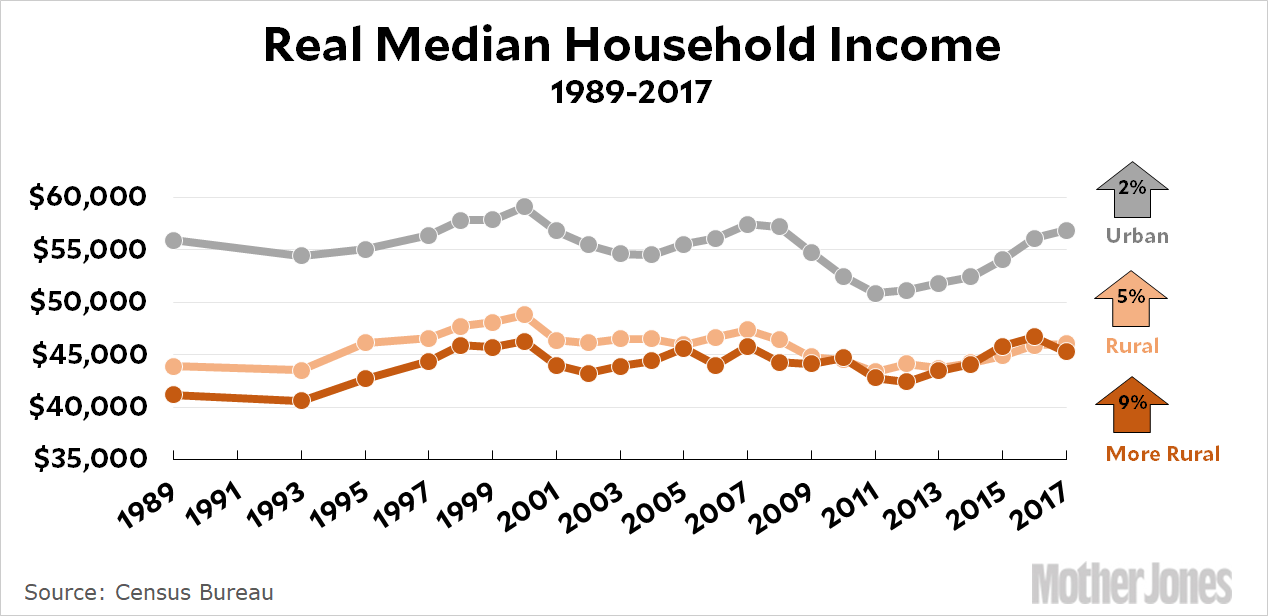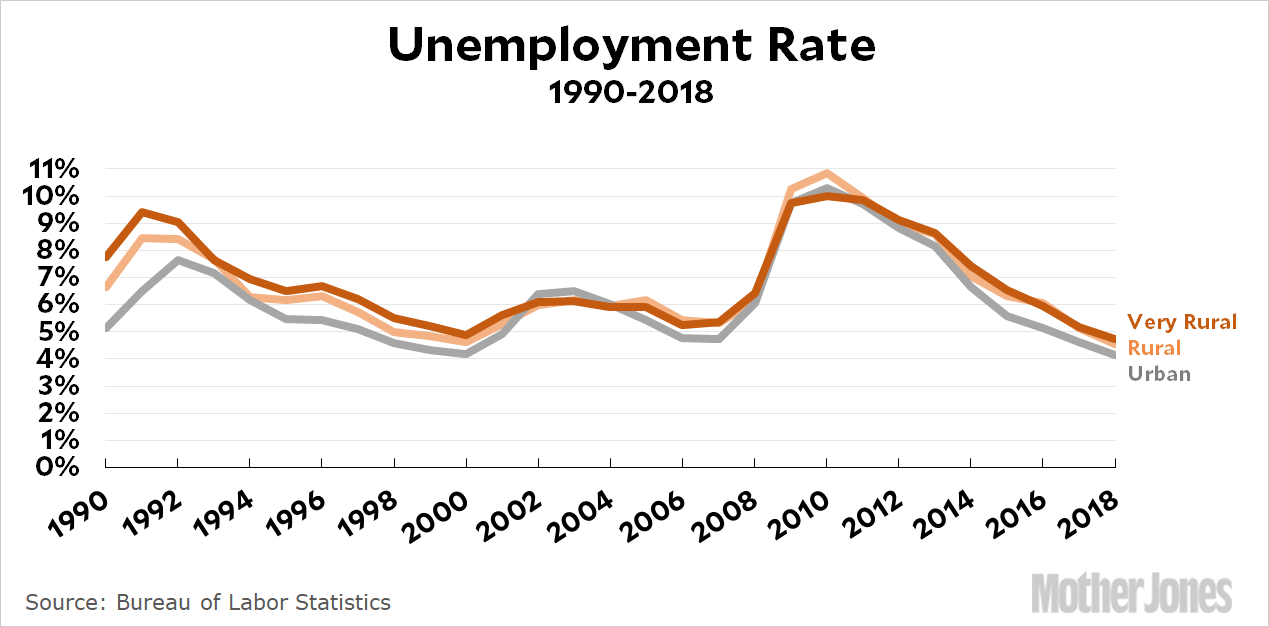I’m continuing to poke into the urban-rural divide, and there are several ways to come at it. Here’s one:
- Choose ten representative rural counties.
- Choose ten big cities.
- Compare median household income over time.
There’s no way to do this that’s perfect, but as a first cut to get a flavor of things, I created a list of ten urban counties, ten rural counties, and ten very rural counties. (See Postscript for details.) The Census Bureau has estimates of county-level median income since 1989, and I took the average of each list for each year. Here are the results:

Likewise, the Bureau of Labor Statistics calculates the unemployment rate by county. Using the same methodology, here it is:

Roughly speaking, rural income has grown slightly more than urban income while rural unemployment averages slightly higher than urban unemployment. Absolute income is higher in cities, of course, but given the higher cost of living in cities I’d guess that the median standard of living is roughly comparable between urban and rural areas.
Now, urban counties obviously have a much higher top end compared to rural counties. The top 10 percent of Los Angeles is probably substantially richer than the top 10 percent in any of the rural counties. On the other hand, urban areas also have a higher poverty rate. Overall, I suspect these averages are fairly representative of what we normally think of as rural and urban, and it suggests that average economic conditions between the two aren’t as different as we often make them out to be.
POSTSCRIPT: There are a surprising number of definitions of rural and urban, but the simplest and most intuitive is based on population density. So I got a list of counties by population density and chose the ten southern and midwestern counties that were closest to a density of 100 per square mile (but allowing only one county per state to maintain a bit of diversity). That forces a random selection, and a density of 100/sqmi is rural but not Deliverance rural, moderate income but not poor. I repeated this for a density of 30 per square mile to get ten very rural counties. For the urban income figures, I chose the counties containing America’s ten biggest cities, once again allowing only one city per state.
Here are the places I used for my averages. For the urban series, I used income figures for the counties containing these cities:
- Brooklyn, NY
- Los Angeles, CA
- Chicago, IL
- Houston, TX
- Phoenix, AZ
- Philadelphia, PA
- Columbus, OH
- Charlotte, NC
- Indianapolis, IN
The ten rural counties are:
- Whitley County, IN
- Pottawattamie County, IA
- Lamar County, GA
- Rapides Parish, LA
- Logan County, OH
- Floyd County, KY
- Person County, NC
- Rhea County, TN
- Pike County, MS
- Taylor County, WV
And the ten very rural counties are:
- Schley County, GA
- Lawrence County, MS
- Sevier County, AR
- Edwards County, IL
- Graham County, NC
- Livingston County, KY
- De Soto Parish, LA
- Winneshiek County, IA
- DeKalb County, MO
- Martin County, IN

















